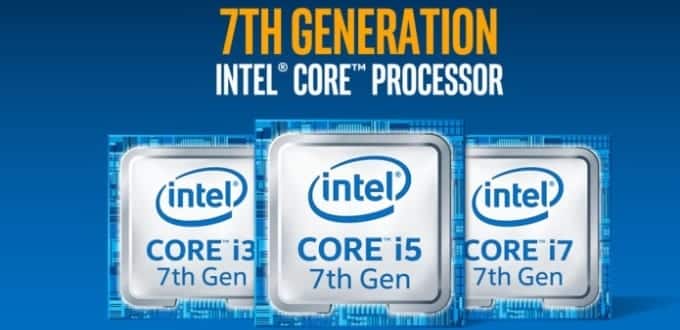Intel announces 7th generation ‘Kaby Lake’ Core processors
Intel has officially launched its first wave of 7th-generation Core processors called internally as ‘Kaby Lake’. The new processors are based on Intel’s 14nm (or 14nm+) design and are a polished version of last year’s ‘Skylake’ series. The new chips are expected to further improve upon the power draw and performance of Intel’s 14nm family of processors.
Intel is concentrating on power efficiency, graphics and performance, while pushing all those features further in this 7th-generation Core processor. The new Kaby Lake processor also focuses on user benefits for its 7th Generation Core processors namely: 4K ultra-HD video streaming, 360-videos, and more intensive graphical performance for video games on smaller computers. Kaby Lake will allow users the power to create and edit their own 4K content with speeds up to 8x faster than a five-year-old PC, in addition to gaining access to 4K content from services like Netflix and YouTube.
“Intel scales 7th Gen Intel Core processors to a variety of PC designs at a wide range of price points, which may include features such as Thunderbolt 3 USB Type-C single-wire connection, low power premium audio and hassle-free facial recognition such as Windows Hello. Users can also expect to see PC designs based on 7th Gen Intel Core processors with a variety of intuitive input options such as touch, voice, and stylus”, says Intel Corporation.
Navin Shenoy, the company’s VP and GM for Client Computing Group explains, “Intel’s engineering and manufacturing teams have drawn even more out of our 14nm process technology with what we call 14nm+. 7th Gen Intel Core delivers up to 12 percent faster productivity performance1 and up to 19 percent faster web performance2 over our previous generation from just a year ago”.
According to Intel, the 7th generation processors are more than 70% faster in CPU performance and 15% faster times for creating and editing 4K UHD files. Inclusion of HEVC 10-bit and VP9 decode help improve 4K UHD content playback. The new processors also come with dual 4K 60Hz monitor support, 40Gbps bandwidth, 100W power output, Thunderbolt networking support, and external graphics,all over a single cable. You also get support for Gen 3 PCIe support, supporting higher data transfer rates of 8 GT/s versus 5 GT/s with PCIe Gen 2.
Intel is also claiming improved battery life, with 3x battery life improvement claimed over local 4K UHD video playback. The chips also run cooler, enabling more fanless designs.
Yesterday’s launches are the first six processors in the U and Y series, which are intended for thin and light portables such as notebooks and 2-in-1s. Three of the parts (Kaby Lake-Y) have a 4.5W TDP and are meant principally for tablets and 2-in-1 devices with dual core CPU and HD 615 GPU, and the remaining three (Kaby Lake-U) parts have a TDP of 15W and are meant for notebooks with dual core CPUs and HD 620 GPU.
The U series parts include an i7, i5, and i3 processor each and the Y series parts include an i7, i5, and m3. The dual-core 3.1GHz Core i5-7200U and 3.5GHz Core i7-7500U, both of which have two CPU cores with Hyper-Threading and support DDR4 RAM; and the Core i7-7Y75, which is also a dual-core part with Hyper-Threading but has a base clock of 1.3GHz and can turbo up to 3.6GHz on demand, and uses DDR3L RAM.

